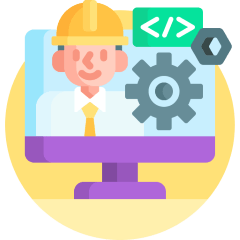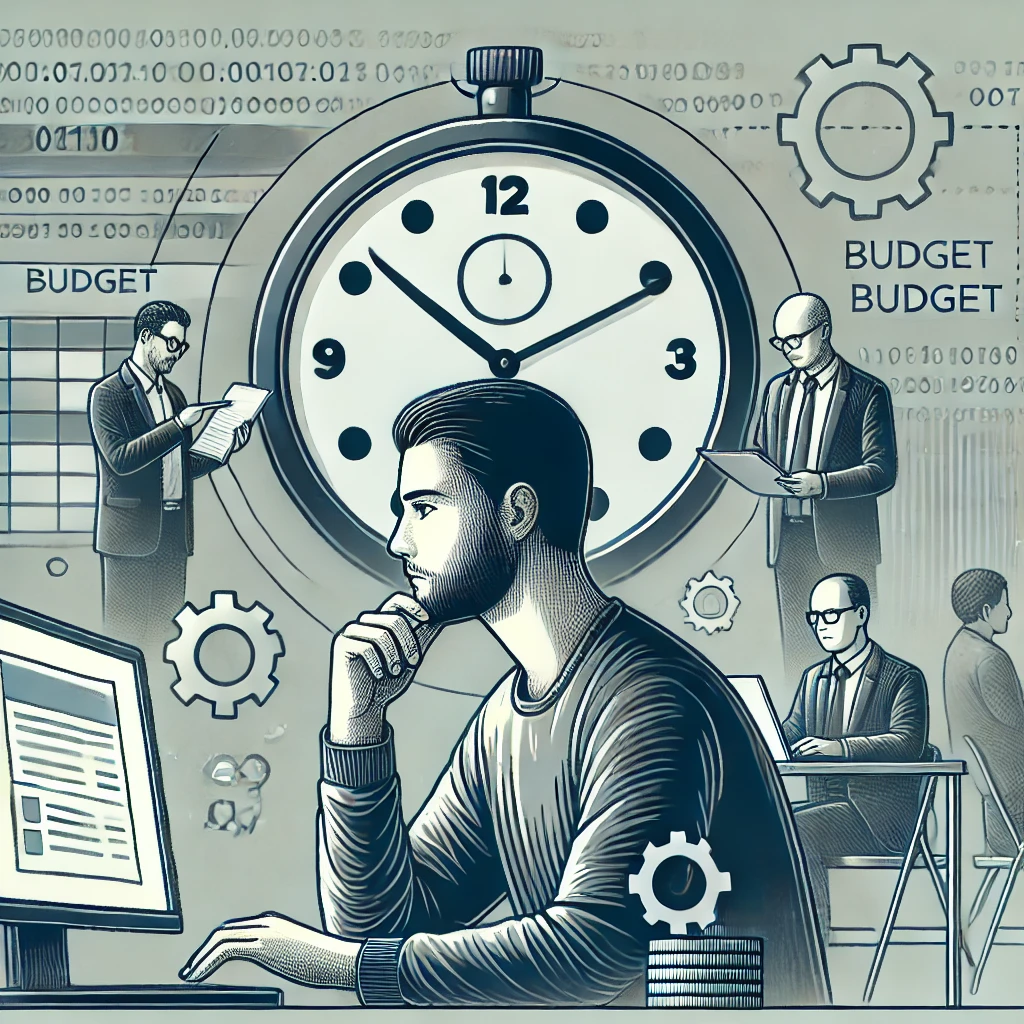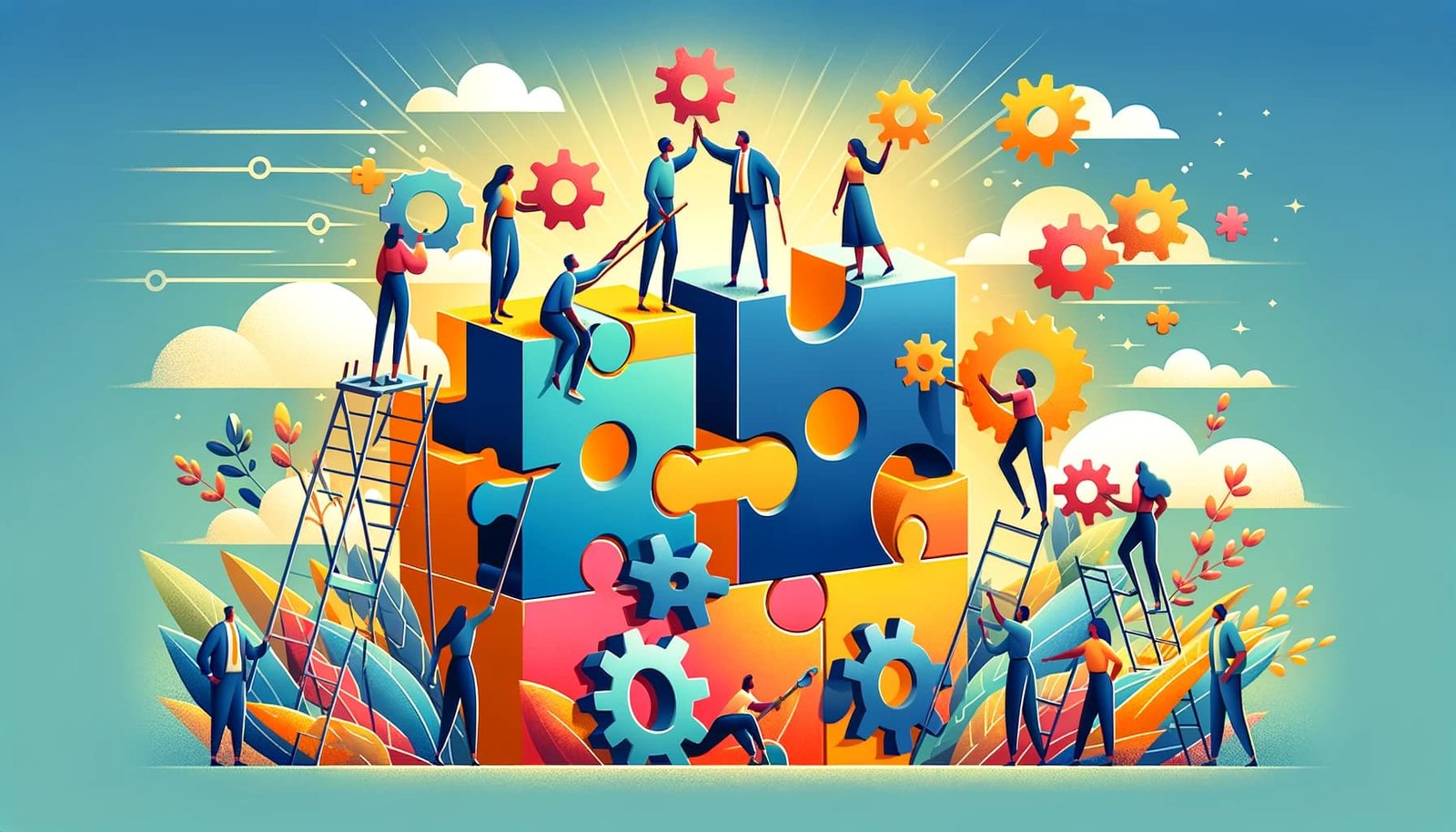As we navigate 2024, the tech landscape is rapidly evolving, reshaping work, communication, and everyday experiences. This article explores nine key tech trends, including artificial intelligence 🤖, cybersecurity 🛡️, and cloud computing ☁️, while also addressing the current economic landscape, environmental sustainability 🌱, and industry challenges.
1. Artificial Intelligence and Machine Learning🤖💭
Generative AI Expands Across Industries
Generative AI has moved beyond chatbots, with applications spanning healthcare 🏥, education 📚, and the creative arts 🎨. Tools like OpenAI’s ChatGPT and Google’s Bard are being used to assist in diagnosing medical conditions, providing personalized tutoring, and generating creative content. In healthcare, for example, AI can analyze vast amounts of data to aid in early diagnosis and treatment plans. Similarly, in the classroom, AI tools can help tailor learning experiences to individual students’ needs, potentially transforming education.
AI’s Growing Role in Daily Life
Beyond professional applications, AI is seamlessly integrating into daily life. From organizing calendars 📅 and assisting in shopping 🛒 to delivering personalized content recommendations 🎬, AI tools are ubiquitous. However, as AI becomes more prevalent, it raises ethical concerns around privacy 🔒 and data security. Consumers and policymakers are grappling with how to ensure responsible AI use, especially as these tools influence our choices and shape our experiences in unprecedented ways. Maintaining a balance between AI’s benefits and data privacy is a priority for both companies and regulators.
2. Cybersecurity and Privacy Concerns🛡️🔍
Cybersecurity Threats Intensify with Remote Work
The widespread adoption of remote work has opened new avenues for cyber threats. Cybercriminals are becoming increasingly sophisticated, targeting individuals and corporations alike. Data breaches, phishing scams, and ransomware attacks are on the rise, and even small businesses are now in the crosshairs of hackers. As a result, companies are investing heavily in cybersecurity measures, including multi-factor authentication, zero-trust architecture, and advanced threat detection systems. Despite these defenses, the dynamic nature of cyber threats requires constant vigilance and innovation from both companies and security experts.
Strengthening Data Privacy Regulations
With consumers more aware of data privacy issues, global regulations like Europe’s GDPR are setting standards for responsible data usage. The U.S. and other regions are adopting similar laws, making compliance crucial for tech companies. These regulations are not just a formality; they require businesses to rethink their data practices, ensuring transparency and giving consumers more control over their information. As privacy concerns grow, more users are opting for privacy-focused products, putting pressure on companies to adopt more ethical data practices.
3. Cloud Computing and Edge Computing☁️💻
Cloud Computing Becomes Essential for Modern Businesses
The demand for cloud computing has surged, driven by the need for scalable infrastructure that supports remote work 🏠 and digital services. Cloud providers like AWS, Microsoft Azure, and Google Cloud dominate this space, offering organizations of all sizes the ability to store and process data remotely. By removing the need for on-premises servers, cloud computing enables businesses to reduce costs, scale operations, and ensure data availability across distributed teams 🌍. However, heavy reliance on cloud services raises concerns about data sovereignty and security, especially as companies increasingly depend on third-party providers to store sensitive information.
The Rise of Edge Computing for Real-Time Data Processing
While cloud computing handles large-scale data storage, edge computing is focused on real-time processing by bringing data computation closer to the source. This is essential for applications like autonomous vehicles 🚗, drones ✈️, and industrial IoT, where latency can affect performance. By processing data locally, edge computing reduces the load on cloud networks and enhances security, as sensitive data doesn’t need to travel far from its origin. This approach also improves efficiency in scenarios that require instant decision-making, such as traffic management in smart cities 🏙️ or quality control in manufacturing.
4. The Expanding Reach of the Internet of Things (IoT)
Smart Cities and Urban Infrastructure
IoT technology is not limited to consumer devices; it’s being integrated into entire cities to improve infrastructure and sustainability 🌍. Smart cities are leveraging IoT sensors to optimize energy usage ⚡, manage traffic flow 🚦, and monitor pollution levels 🌬️. For instance, smart streetlights adjust brightness based on activity levels, and waste management systems use IoT to track bin fill levels, reducing unnecessary collections. These implementations make urban areas more efficient and eco-friendly, transforming public spaces through technology.
Industrial IoT Transforms Manufacturing
IoT is revolutionizing the manufacturing sector, enabling predictive maintenance, enhancing supply chain transparency, and optimizing factory operations 🏭. Sensors embedded in machinery provide real-time insights, allowing companies to anticipate issues before they cause downtime. This proactive approach saves costs and improves productivity. Furthermore, industrial IoT systems can track products across the supply chain, enhancing traceability and quality control 📦. As IoT becomes more embedded in industrial processes, it’s creating safer and more efficient production environments.
5. Quantum Computing: Progress and Promise⚛️💡
Steady Advances in Quantum Technology
Quantum computing holds the potential to solve complex problems that classical computers cannot, particularly in fields like cryptography, drug discovery, and climate modeling. Companies such as IBM, Google, and Rigetti are investing in quantum research and developing hardware prototypes. These advancements, while incremental, indicate steady progress. For instance, quantum algorithms designed to analyze vast datasets or model molecular structures could revolutionize industries reliant on data-heavy operations.
Significant Investment in Quantum Research
Governments and private sectors are pouring resources into quantum research, positioning it as a long-term priority. Quantum research is complex and costly, but the potential applications justify these investments. Despite current limitations, experts believe that quantum computing will eventually drive breakthroughs across sectors. However, broad commercialization of quantum technology remains distant, with many challenges still to be addressed, including error correction and hardware stability.
6. 5G Expansion and 6G Research📶🚀
5G Networks Become Standard
5G is becoming the standard for mobile and IoT connectivity, providing faster speeds, higher bandwidth, and lower latency. This enables a new level of connectivity for applications such as augmented reality 🌈, connected vehicles 🚗, and smart infrastructure 🏙️. As 5G continues to expand, industries from healthcare to logistics are finding new ways to leverage its capabilities. The rise of 5G is also stimulating the growth of edge computing, which complements 5G’s low-latency features by enabling local data processing.
6G: The Next Frontier
While 5G is still expanding, researchers are already exploring 6G, which promises even faster speeds and greater capacity. Projected to launch in the next decade, 6G could enable advanced applications such as holographic communication and seamless AI-driven interactions. The implications of 6G extend beyond faster mobile speeds, potentially revolutionizing sectors that rely on real-time data processing, like autonomous transportation and smart infrastructure. Although it remains in the research phase, the future of 6G holds exciting possibilities for tech-driven innovation.
7. Remote Work and Collaboration Tools🏠💻
The Rise of Advanced Collaboration Software
Remote work is now a permanent fixture for many companies, driving innovation in collaboration tools like Slack, Microsoft Teams, and Zoom. These platforms have integrated AI-driven features to help with meeting transcriptions, task tracking, and workflow automation, making remote collaboration more efficient 🤝. However, while these tools facilitate productivity, they also contribute to digital fatigue. To combat this, companies are implementing policies to support work-life balance ⚖️, such as scheduled breaks and reduced meeting times, to help employees avoid burnout.
Addressing the Challenges of Digital Fatigue
With the shift to remote and hybrid work, digital fatigue has emerged as a major issue. Constant virtual meetings and notifications can leave employees feeling drained 😫. Companies are responding by creating wellness programs, encouraging flexible schedules, and using technology to monitor workload and prevent overexertion. As remote work becomes more structured, organizations are prioritizing employee well-being and investing in tools that not only increase productivity but also support mental health 🧘.
8. Environmental Sustainability in Technology🌱♻️
Tech’s Environmental Footprint
As the tech industry grows, so does its impact on the environment. Data centers, manufacturing, and device disposal contribute to carbon emissions and e-waste. Major players like Google, Amazon, and Microsoft are taking steps to reduce their environmental impact, committing to carbon neutrality and exploring energy-efficient technologies. Startups focused on sustainable tech are also emerging, innovating in areas like recyclable materials, biodegradable electronics, and energy-efficient servers.
Green Tech Solutions
Tech is essential in driving sustainability, with advancements in renewable energy and resource management. AI and IoT are helping optimize energy use in industries like agriculture 🌾 and urban infrastructure 🏙️, reducing waste and enhancing efficiency. The shift to electric vehicles 🚗, supported by tech-driven charging infrastructure, is part of a larger move toward green technology. These initiatives highlight how technology can be both a contributor to and a solution for environmental issues, fostering a more sustainable future 🌍.
9. Industry Contraction and Layoffs🏢📉
Layoffs and Market Adjustment
Following pandemic-driven hiring booms, tech companies are downsizing as demand stabilizes. Many companies, including Google and Amazon, have announced layoffs to streamline operations and realign with core priorities like AI development 🤖. This wave of layoffs has affected a range of roles, particularly inthe industry, affecting roles in engineering, product development, and middle management.
The Economic Impact on Tech Employment
Economic factors such as inflation 📈, rising interest rates, and operational costs have pushed companies to optimize budgets. Mergers and acquisitions focused on efficiency have led to further workforce reductions. Many tech professionals are transitioning into high-demand fields like AI, cybersecurity 🛡️, and green tech 🌱, where market demand remains steady.
Automation’s Influence on Employment
Automation and AI are reshaping job roles by taking over repetitive tasks. While this shift reduces demand for certain roles, it also creates opportunities in specialized fields requiring strategic thinking and complex problem-solving 🧠. Tech professionals who prioritize upskilling in advanced areas are better positioned in the evolving market.
A New Era of Innovation and Efficiency
While these layoffs present challenges, they also signal a recalibration in the tech industry. The focus has shifted from rapid growth to sustainable innovation. Engineers who adapt by gaining expertise in emerging areas, such as AI, cybersecurity, and environmental technology, will find new opportunities. This phase marks the beginning of a more efficient and specialized industry where technology professionals are increasingly valued for their adaptability and deep technical knowledge. 🌐
Final Thoughts💭
In 2024, the tech landscape continues to evolve, presenting both opportunities and challenges. Rapid advancements in AI, IoT 🌐, and cloud computing ☁️ are transforming industries, while concerns around cybersecurity, privacy, and sustainability demand careful attention. The recent industry contraction serves as a reminder that continuous learning and adaptation are essential for professionals navigating this dynamic environment. Looking ahead, the state of tech today reflects a nuanced balance between innovation and accountability, shaping how technology will impact our lives in the coming years.
References
Deloitte Insights. (2024). Tech Industry Growth 2024. This report highlights growth areas in cloud computing, cybersecurity, and AI, while discussing regulatory and talent challenges in the sector. Access at Deloitte InsightsDeloitte United States.
Dataconomy. (2024). Analysis: Factors Behind 2024 Tech Layoffs. This report provides an in-depth look at major tech layoffs in 2024, emphasizing the role of AI and automation in reshaping the workforce. Available at DataconomyDataconomy.
Mondo Staffing Agency. (2024). The Tech Layoff Boom of 2024: Shifts and Opportunities. This article discusses economic pressures, automation, and evolving tech roles that contribute to layoffs and job transitions in 2024. Access at MondoMondo Staffing Agency.
Technology Magazine. (2024). Technology Layoffs Continue in 2024 Amid Global Rise in AI. This article examines AI adoption and the resulting structural changes in tech companies, impacting workforces. Access at Technology MagazineHome of Technology News.
AI Magazine. (2024). Tech Industry Layoffs 2024: Businesses Continue Embracing AI. This report covers AI-driven business strategies and workforce impacts among tech giants. Available at AI MagazineAI News Hub.









